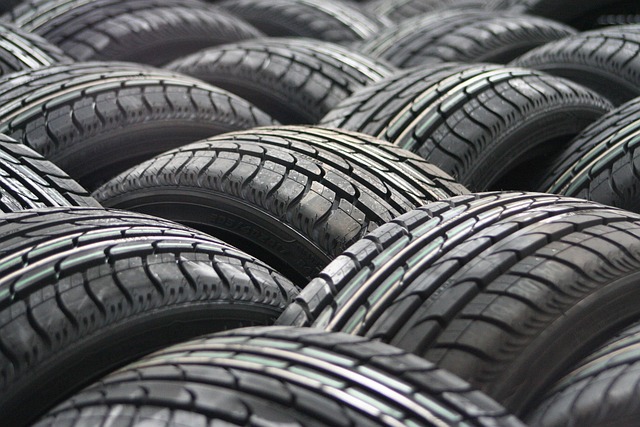Looking to register your car in California? This guide breaks down the process step-by-step, ensuring you meet all state requirements. From understanding crucial car registration needs to choosing the best method, we cover it all. Learn how to gather essential documents, verify your Vehicle Identification Number (VIN) accuracy, and successfully submit applications with ease. Get ready to navigate California’s car registration process like a pro using reliable VIN verifier tools.
- Understand California Car Registration Requirements
- Gather Necessary Documents for Registration
- Verify Vehicle Identification Number (VIN) Accuracy
- Choose an Appropriate Registration Method
- Submit Application and Pay Fees Successfully
Understand California Car Registration Requirements

Before registering your car in California, it’s crucial to understand the state’s specific requirements. All vehicles operated on California roads must be properly registered and have a valid car insurance policy. Additionally, each vehicle needs an up-to-date safety inspection to ensure compliance with state standards. This process involves verifying the vehicle identification number (VIN) to confirm its authenticity and history.
A key component of this verification is a VIN inspection or VIN verification, which can be conducted at designated stations or through mobile vin inspection services. These services offer convenience by coming to your location, making it easier for residents across California to complete their registration process efficiently.
Gather Necessary Documents for Registration

Before you start the registration process, it’s crucial to gather all the essential documents required by the California Department of Motor Vehicles (DMV). This includes your vehicle’s Certificate of Title, which you’ll typically receive from the seller, and a valid driver’s license or ID card. The Vehicle Identification Number (VIN) is another critical piece of information; this unique code can be located on the vehicle itself, usually on the dashboard near the driver’s seat or on the engine block. Using a VIN verifier, whether it’s a mobile vin inspection service or an online tool, can help ensure the accuracy of this number.
Additionally, you’ll need proof of insurance and, if applicable, any relevant repair or maintenance records. These documents play a vital role in verifying your vehicle’s history and ensuring compliance with California’s registration guidelines. Having these prepared beforehand will streamline the registration process and prevent any delays at the DMV.
Verify Vehicle Identification Number (VIN) Accuracy

Before registering your car in California, it’s crucial to ensure that the Vehicle Identification Number (VIN) is accurate. This unique 17-character code is a vital part of your vehicle’s history and identity. Double-check the VIN on the vehicle’s official documentation, such as the certificate of sale or purchase. A common mistake is transposing numbers or misreading characters, so take time to verify each digit.
For added peace of mind, consider using a mobile vin verification service. These apps or platforms allow for quick and convenient checks against national databases, ensuring your VIN is legitimate and not reported as stolen. Some even offer mobile vin inspection features, providing an extra layer of protection during the registration process.
Choose an Appropriate Registration Method

When registering your car in California, understanding your registration options is key to a smooth process. One important decision is choosing the right method for verifying your vehicle’s identity, which can be done through various means. The traditional approach involves visiting a DMV office and submitting the necessary documents, but with technological advancements, there are now more convenient alternatives.
One such option is utilizing a vin verifier or engaging in mobile vin verification. This digital process allows you to check your vehicle’s history and ensure its authenticity remotely. By using specialized apps or online services, you can easily enter your car’s unique Vehicle Identification Number (VIN) for an instant inspection. This modern approach saves time and effort, especially when compared to the traditional vin inspection at a physical location.
Submit Application and Pay Fees Successfully

After verifying your vehicle’s information, including its unique VIN (Vehicle Identification Number), the next step is to submit your application and fees. This crucial phase involves filling out the appropriate forms and ensuring all required documents are attached. The California DMV provides an efficient online system for this process, allowing you to complete it conveniently from home. You’ll need to include essential details like your personal information, vehicle specifications, and proof of insurance.
Once your application is complete, you’ll be directed to secure the necessary fees using a variety of payment methods accepted by the DMV. After successful submission, don’t forget to receive your confirmation and any relevant permits or documents, such as a registration certificate. This might also be a good time to consider utilizing mobile vin inspection services for added convenience if you’re unable to visit a DMV office in person.
Registering a car in California involves understanding clear requirements, gathering essential documents, and choosing the right registration method. By verifying your Vehicle Identification Number (VIN) accurately using a reliable VIN verifier, you ensure a smooth process. Successfully submitting your application and paying fees ensures your vehicle is legally registered, allowing you to hit the road with confidence.
